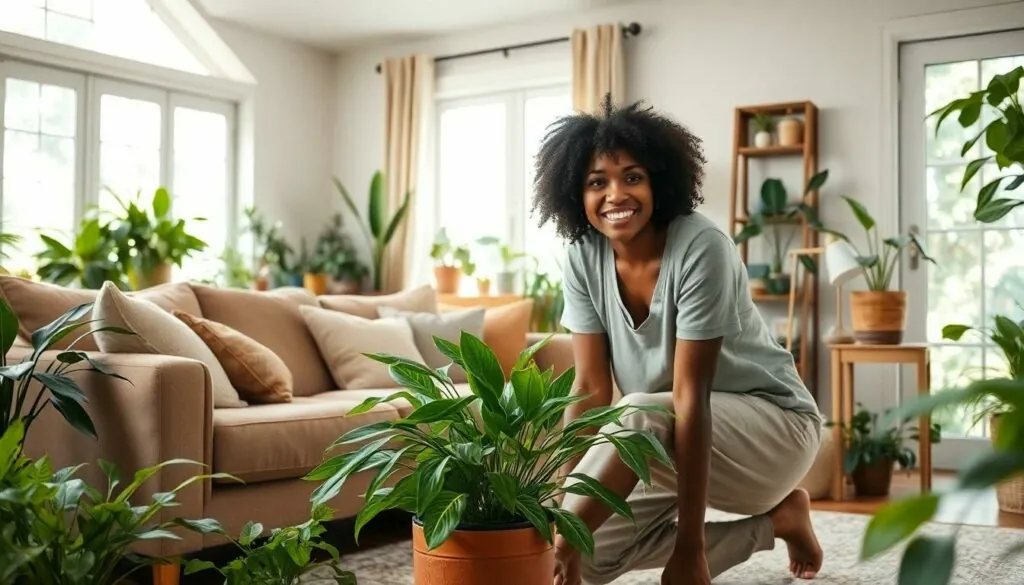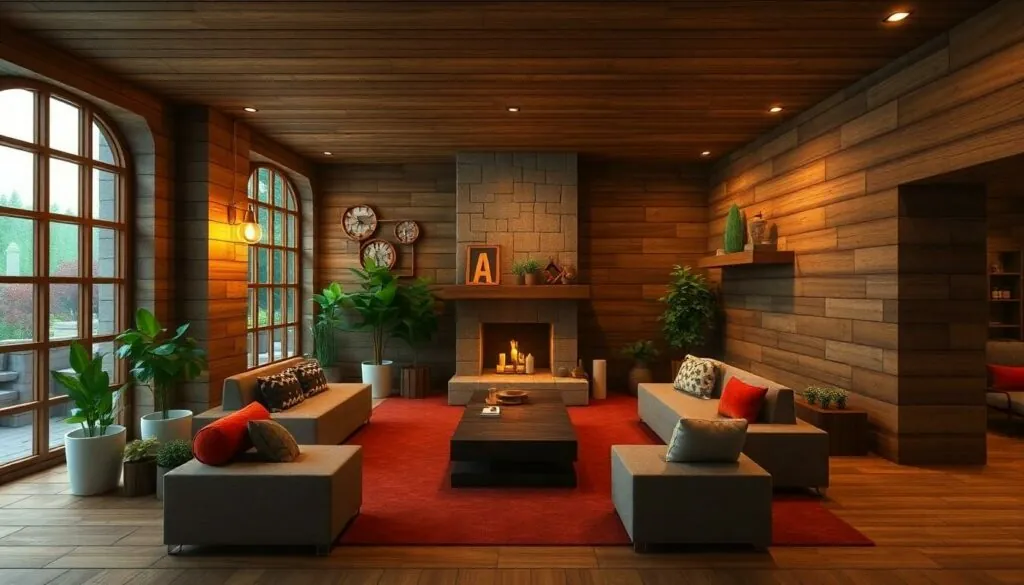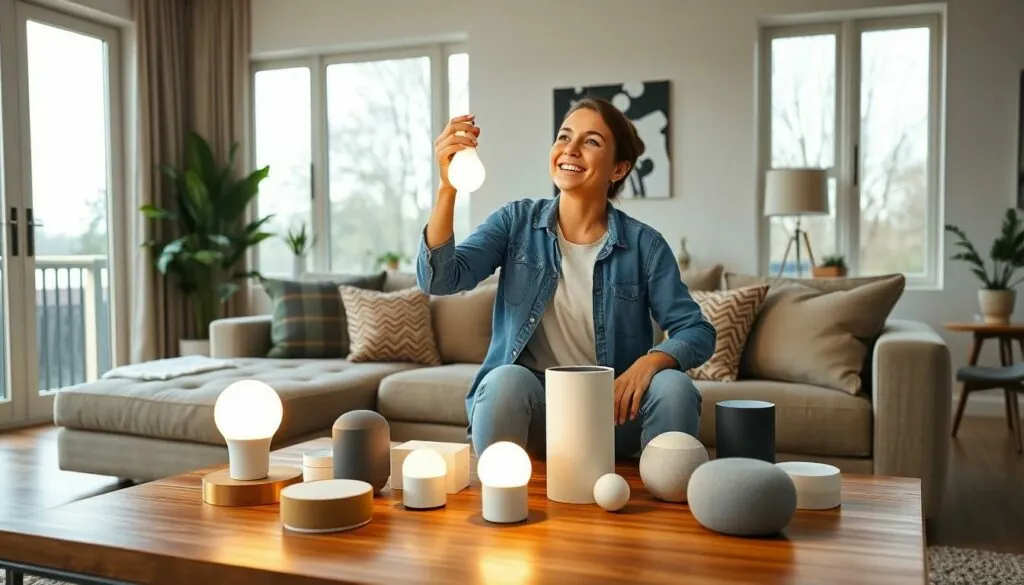Imagine walking into a home that feels like a breath of fresh air—literally. Organic interior design isn’t just a trend; it’s a lifestyle choice that transforms spaces into serene sanctuaries. By embracing natural materials and eco-friendly practices, this design philosophy invites the outside world in, making every corner of your home a little slice of nature.
But wait, it gets better! Organic design isn’t about living in a treehouse or sacrificing style for sustainability. It’s about creating beautiful, functional spaces that make you feel good. Think cozy textiles, earthy colors, and plants that don’t just sit pretty but actually purify the air. So, if you’re ready to swap out that fluorescent lighting for something a bit more… organic, this guide will show you how to bring the beauty of nature indoors without losing your personal flair.
Table of Contents
ToggleWhat Is Organic Interior Design?
Organic interior design prioritizes natural materials and eco-friendly practices to create inviting spaces that promote well-being. This design approach embraces simplicity, focusing on elements that reflect nature’s beauty. Eco-conscious choices, such as using sustainable wood, bamboo, or recycled materials, play a central role in the aesthetic.
Textures also hold significance in organic design. Soft textiles like linen and cotton contribute to a cozy atmosphere, while earthy colors evoke a sense of calm. Incorporating air-purifying plants enhances the environment, providing both aesthetic appeal and health benefits. These plants improve indoor air quality and create a refreshing ambiance.
Light plays a crucial role in organic design. Natural light sources such as large windows or skylights bathe spaces in warmth, fostering a connection with the outdoors. This approach promotes a soothing environment that encourages relaxation and harmony.
Functionality remains essential in organic interior design. Furniture choices reflect comfort and practicality, ensuring spaces serve their intended purpose while maintaining visual appeal. Built-in shelving or multifunctional pieces help keep living areas clutter-free, further enhancing a serene atmosphere.
Ultimately, organic interior design invites individuals to nurture their connection with nature. By creating tranquil, stylish environments, it transforms homes into sanctuaries that support mental and emotional well-being. Embracing organic principles crafts spaces that reflect personal style without compromising sustainability.
Benefits of Organic Interior Design

Organic interior design offers numerous advantages that enhance spaces and promote well-being. By focusing on sustainability and natural elements, it creates harmonious environments.
Environmental Impact
Organic interior design significantly reduces environmental strain. Choosing sustainable materials, such as reclaimed wood and bamboo, minimizes deforestation and resource depletion. Utilizing non-toxic paints and adhesives lowers chemical emissions, promoting cleaner air quality. Air-purifying plants absorb toxins, contributing to healthier indoor environments. Incorporating energy-efficient lighting and appliances conserves energy, further reducing carbon footprints. Overall, organic design fosters eco-friendly living while contributing to environmental conservation.
Health and Wellbeing
Organic interior design prioritizes health and mental well-being. Natural materials like cotton and linen provide comfort, enhancing physical wellness. Proper ventilation and natural light promote a calming atmosphere that reduces stress. Soft textures and earthy colors create visually pleasing spaces, enhancing emotional comfort. Research shows greenery indoors boosts mood and productivity. Ultimately, organic design cultivates sanctuaries that nourish both physical health and emotional stability.
Key Elements of Organic Interior Design
Organic interior design incorporates several essential elements that create harmonious and serene living environments. These elements focus on enhancing well-being and embracing the beauty of nature.
Natural Materials
Natural materials serve as the foundation of organic interior design. Wood, bamboo, and cork add warmth and texture while promoting sustainability. Natural stone enhances tactile experiences and brings the outdoors inside. Organic fabrics, such as linen and cotton, contribute to comfort and visual appeal. Using these materials supports eco-friendly practices by reducing reliance on synthetic substances and fostering a connection with nature.
Sustainable Practices
Sustainable practices play a crucial role in organic interior design. Implementing energy-efficient lighting minimizes environmental impact while enhancing indoor spaces. Choosing non-toxic paints and finishes ensures healthier living conditions. Reclaimed and recycled furniture incorporates history and character into interior aesthetics. Prioritizing local sourcing reduces transportation emissions and supports community artisans. Each sustainable choice contributes to a healthier planet and a tranquil home atmosphere.
Color Palette
The color palette in organic interior design reflects the hues found in nature. Earthy tones such as greens, browns, and soft neutrals create a calming environment. These colors evoke serenity and balance while enhancing the overall design. Incorporating botanical-inspired shades adds depth and vibrancy without overwhelming the space. Selecting complementary shades promotes harmony and encourages relaxation, fostering a retreat-like feeling in the home.
Tips for Implementing Organic Interior Design
Implementing organic interior design creates a harmonious, natural space. Focus on these key strategies to enhance your home.
Choosing the Right Furniture
Opt for furniture made from sustainable materials, such as reclaimed wood or bamboo. Prioritize pieces that blend aesthetics with functionality, ensuring comfort. Consider furniture with natural finishes to maintain an organic feel. Selecting items that reflect simplicity contributes to a clutter-free environment. Mix different textures to add visual interest while adhering to an eco-friendly approach.
Incorporating Plants
Include a variety of air-purifying plants to improve indoor air quality. Choose low-maintenance options like snake plants or pothos for ease of care. Position greenery strategically to create visual focal points in your spaces. Incorporating plants enhances mood and promotes relaxation. Using natural pots made from clay or terracotta complements the organic theme.
Creating a Cozy Atmosphere
Utilize soft textiles in natural fibers, such as linen and cotton, for comfort. Layering blankets and cushions adds warmth to seating areas. Incorporate warm, earthy color palettes to foster a calming ambiance. Lighting plays a crucial role; use soft, diffused sources to enhance the space. Create cozy nooks that invite relaxation and encourage unwinding.
Embracing organic interior design offers a pathway to create serene and sustainable living spaces. By prioritizing natural materials and eco-friendly practices, individuals can transform their homes into sanctuaries that enhance well-being. The integration of earthy colors, cozy textiles, and air-purifying plants fosters a connection with nature that promotes relaxation and emotional stability.
This design approach not only reflects personal style but also contributes positively to the environment. With thoughtful choices in furniture and decor, one can achieve a harmonious balance between aesthetics and functionality. Ultimately, organic interior design invites everyone to cultivate a nurturing atmosphere that supports health and happiness.





